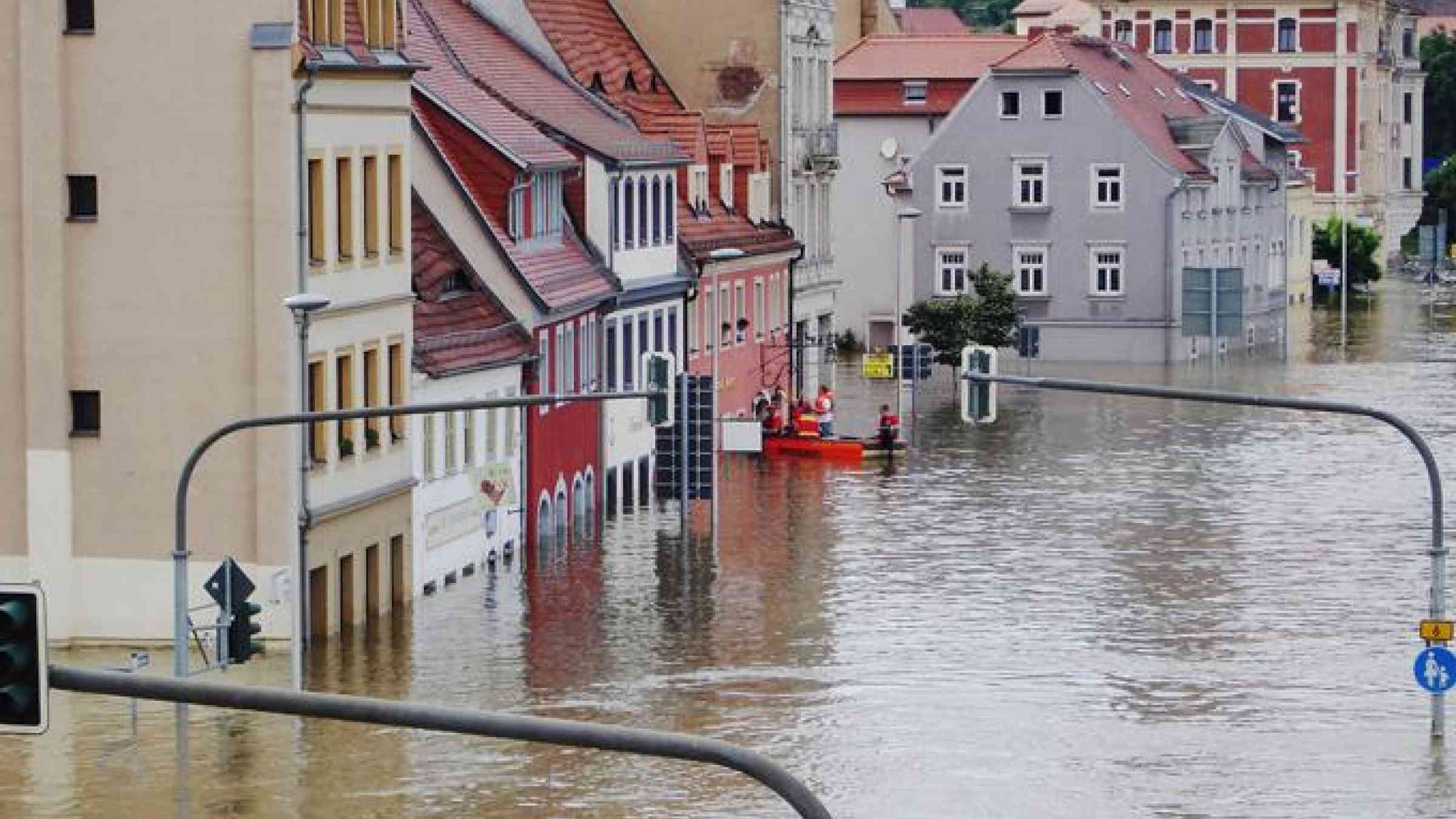
£1.1 billion a year of flood damage is being prevented by the UK’s current network of river barriers and defences, according to landmark research being published today.
It’s the first time the financial contribution of river water defences has been quantified in this way. The results are being unveiled today (Wed 12th June) at the Association of British Insurers’ conference “Building a resilient future for the UK’s property insurance market”.
The modelling, based on thousands of simulations of weather events with and without flood defences, was commissioned by Flood Re and conducted by Risk Management Solutions (RMS). It emphasises the value to UK homes and businesses of flood defence spending and the importance of on-going investment by governments, particularly for flood-prone locations such as Cumbria, Yorkshire, Somerset and the Welsh Valleys.
It shows that inland flooding would, on average, cost almost 3 times more on an annual basis without the defences – a bill of £1.8 billion rather than £0.7 billion across the whole of the UK. In England, the Government currently spends around £0.6 billion each year on building and maintaining flood defences, with the Environment Agency recently recommending an annual spend of £1 billion on all flood risk management.
Despite the lack of severe flooding in recent years, speculation that this June could be the wettest on record is also a timely reminder that any long-term government spending allocations need to reflect the importance of on-going funding for flood management.
Other findings include:
- Residential properties benefit from 42% of the average annual savings, the highest proportion of all assets analysed.
- The more deprived 50% of the residential population benefits from 70% of the reductions in flood losses due to defences.
- Relative to the total damage floods could cause without defences, the benefits of defences are largest for more frequent, less severe flooding such as might be expected to happen once every five years. The financial impact of these less severe floods is reduced by 68% on average.
Closer examination of what happened in Cumbria in December 2015 shows the flooding caused by Storm Desmond would have done damage worth three-and-a-half times as much without river water defences - £2.8 billion rather than £0.6 billion.
James Dalton, Director of General Insurance Policy at the ABI, said:
“The human cost of flooding is immeasurable, putting lives at risk, causing families great trauma and pushing some businesses to the brink. Flood defences are an essential part of the protection system which prevents and minimises the trauma caused by flooding as much as possible.
“Faced with the growing threat of climate change, there is a clear financial argument for investing in flood defences. The barriers, walls and natural defences that currently prevent greater damage being done by the UK’s rivers during times of extreme weather make economic sense, but they must keep pace with the threat if they are to continue being effective. It’s essential the UK Government sticks to its ambitions on flood defence spending and doesn’t let the lack of severe flooding in recent years lull the country into a false sense of security.”
Dermot Kehoe, Director of Comunications and Transition at Flood Re, said:
“Since our launch, almost 250,000 properties at risk of flooding have benefitted from the peace of mind provided by Flood Re. However, Flood Re will only be around for the next 20 years. This research shows just how vital it is that investment in flood defences is maintained in the future so that householders will not need to live in fear of flooding after Flood Re has gone.”
Daniel Stander, Global Managing Director, Risk Management Solutions, said:
“I’ve often heard it said that an ounce of protection is worth a pound of cure. Such platitudes, however, cannot be allowed to suffice – especially in the face of events that wreck homes, lives and communities. Effective public policy must be based on decision-useful, analytical insights.
“Thanks to this study, what we now have is robust methodology for demonstrating the return on investments in resilience. With climate risk increasing, it’s even more important that stakeholders avail themselves of such analytical techniques. Only then can we hope to build a sustainable future for all.”